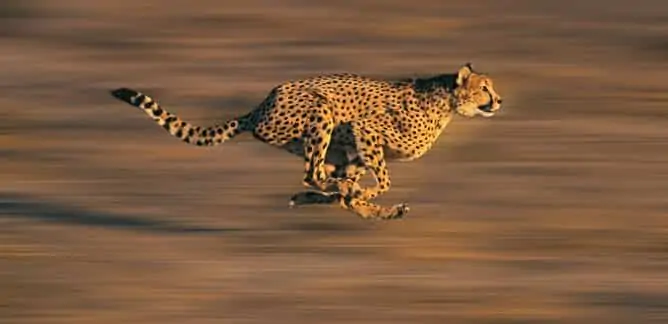Nature can be incredibly helpful when it comes to solving complex human problems - I've often talked about biomimetics on these pages, and I'm proud of it. In this case, the light, streamlined tail of a feline, the cheetah, allowed scientists to overcome a problem in robotics, according to a study published in IEEE Transactions on Robotics .
Are you surprised that cats can be so useful to engineers? You shouldn't be.
Many big cats move with great precision and agility, even at high speeds. In part, it's thanks to their tails. Until now the same thing could not be said about robots: adding a tail to a robot can lead to disadvantages such as greater mass, a greater energy cost and high inertia (the resistance of an object to any variation in its speed). But, but… now it seems that things have changed.
A problem of inertia

While most robotic tails have high inertia, the cheetah tail uses aerodynamic drag to gain strength with little inertia. According to researchers at Robomechanics Lab from Carnegie Mellon University, working in collaboration with the University of Cape Town, an aerodynamic tail (very similar to that of the feline) could improve robotic mobility.
Robotic tails have always produced great inertia due to their simplicity, but nature already knows there are better ways to stabilize agile movements.
In the paper, the researchers compared aerodynamic and inertial feline tails to build an equally effective robotic tail.
This research suggests that following nature's inspiration results in equally effective tails for a fraction of the weight.
From an excerpt from the research paper
Feline tail, more agile robot
Highlighting the effectiveness of the tail in improving the robot's agility and giving it better control over its movements, the researchers point out that the tail "emulated" by the feline has the advantage of being much lighter.
Sure, the mass of the robot has increased, but the research team found that a robot with a tail can accelerate faster than a robot without a tail. “The tails help stabilize the robot, which is critical when performing difficult maneuvers. We believe that improving robot agility will make our robots better at helping people outside the lab,” Norby said.
A truly feline jerk for robotics, I'd like to say. Anyway, here's the robot in action below:


